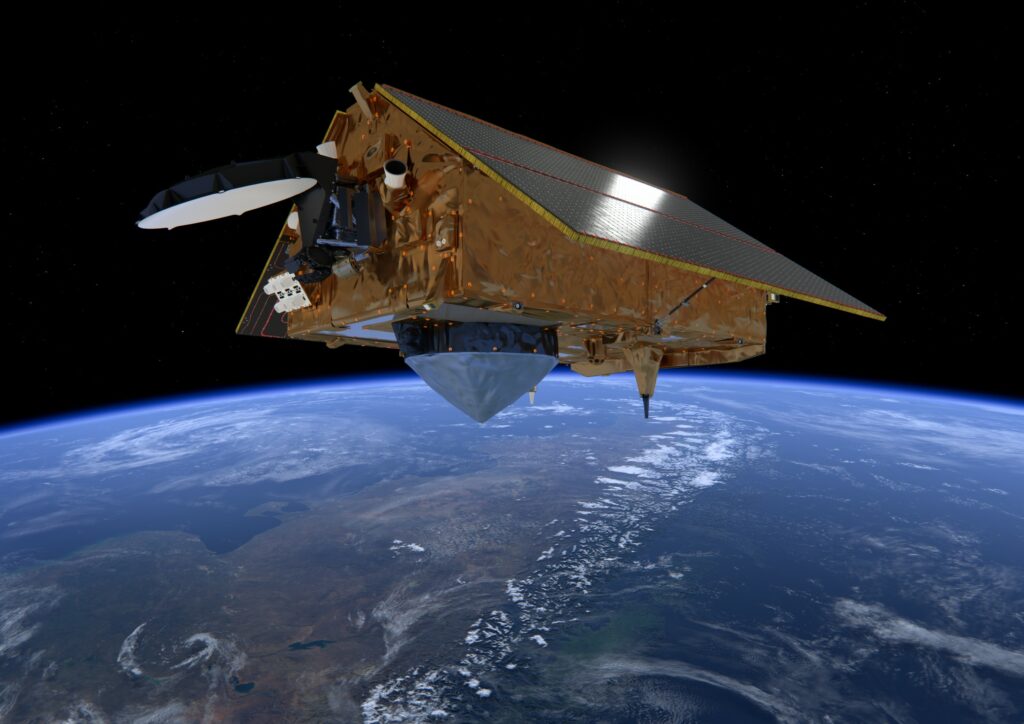NASA and the European Space Agency (ESA) have launched a new ‘doghouse’ satellite into space that will shed new light on the impact of climate change. The Sentinel-6 will provide a new overview of ocean topography and advance the long-term record of sea-surface height measurements.

The Copernicus Sentinel-6 Michael Freilich satellite (named after a former NASA director) was launched into orbit on a SpaceX Falcon 9 rocket, lifting off from California. The satellite was delivered into orbit just under an hour after liftoff, successfully establishing with the ground station.
ESA’s Director of Earth Observation Programmes, Josef Aschbacher, commented after the launch:
“I’m extremely proud to have seen Copernicus Sentinel-6 liftoff this evening and know that it’s well on its way to starting its mission of continuing the measurements of sea level that are so needed.”
With nearly 40% of the global population living in coastal communities around the world, rising seas are at the top of the list of major concerns linked to climate change. Monitoring sea-surface height is very important to understand the changes that are happening, so countries can have sufficient evidence to implement climate policies.
The Intergovernmental Panel on Climate Change (IPCC) estimates that if climate change continues at today’s rate, sea levels could rise by a meter by the end of the century. This could be dangerous for many countries. It would affect not only small islands in the Pacific but also the coasts of Europe, Asia, and the US.
Over the last three decades, US and European satellites such as Jason-3, Envisar, ERS, and CryoSat have shown how sea level has risen about 3.2 mm on average every year. But this rate of rising has been accelerating as the world gets warmer, reaching the average rate of 4.8 mm a year over the last few years.
Now in orbit, Sentinel-6 will soon pick up the baton and extend the dataset on sea-level rise. The mission comprises two identical satellites launched sequentially, which means in five years the Sentinel-6B will be launched to take over. The mission as a whole will ensure the continuity of data until at least 2030.
Each satellite carries a radar altimeter, which works by measuring the time it takes for radar pulses to travel to Earth’s surface and back again. Altimetry measurements yield the height of the sea surface. The satellite also has a microwave radiometer that accounts for the amount of water vapor in the atmosphere.
The radar instrument will operate in a continuous burst mode, simultaneously providing conventional low-resolution mode measurements and the improved performance of synthetic aperture radar processing. This ensures that no bias is introduced into the time series, ESA explained in a statement.
The satellite is spending its first year in orbit flying just 30 seconds behind Jason-3 so to ensure that the data time series is continuous despite the change of instrument. It will orbit at an altitude of over 1300 km and provides sufficient measurements to map the height of the sea surface over 95% of the world’s ice-free oceans every 10 days.
Thomas Zurbuchen, NASA’s Associate Administrator for Science in Washington DC, said in a statement that the satellite will carry out the “critical work” in which Mike Freilich believed in, “adding to a legacy of crucial data about our oceans and paying it forward for the benefit of future generations.”
The Sentinel-6 is part of the missions of the Copernicus program. It started with the Sentinel 1 in 2014, which provides radar images of the planet’s surface in all types of weather. Others were added since then, including the Sentinel 2 and the Sentinel 3, which detect changes in vegetation and measure temperatures on land and ocean.









